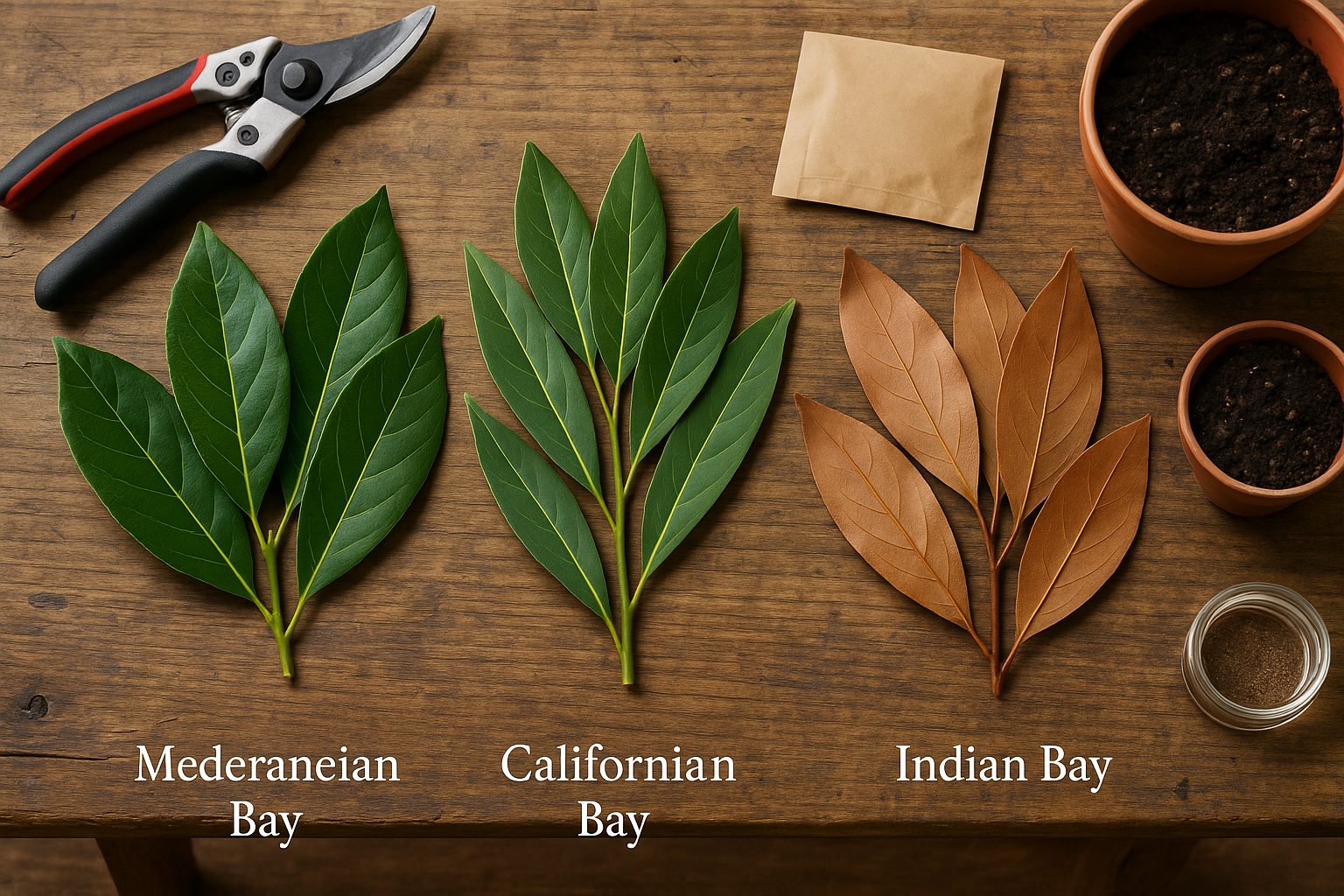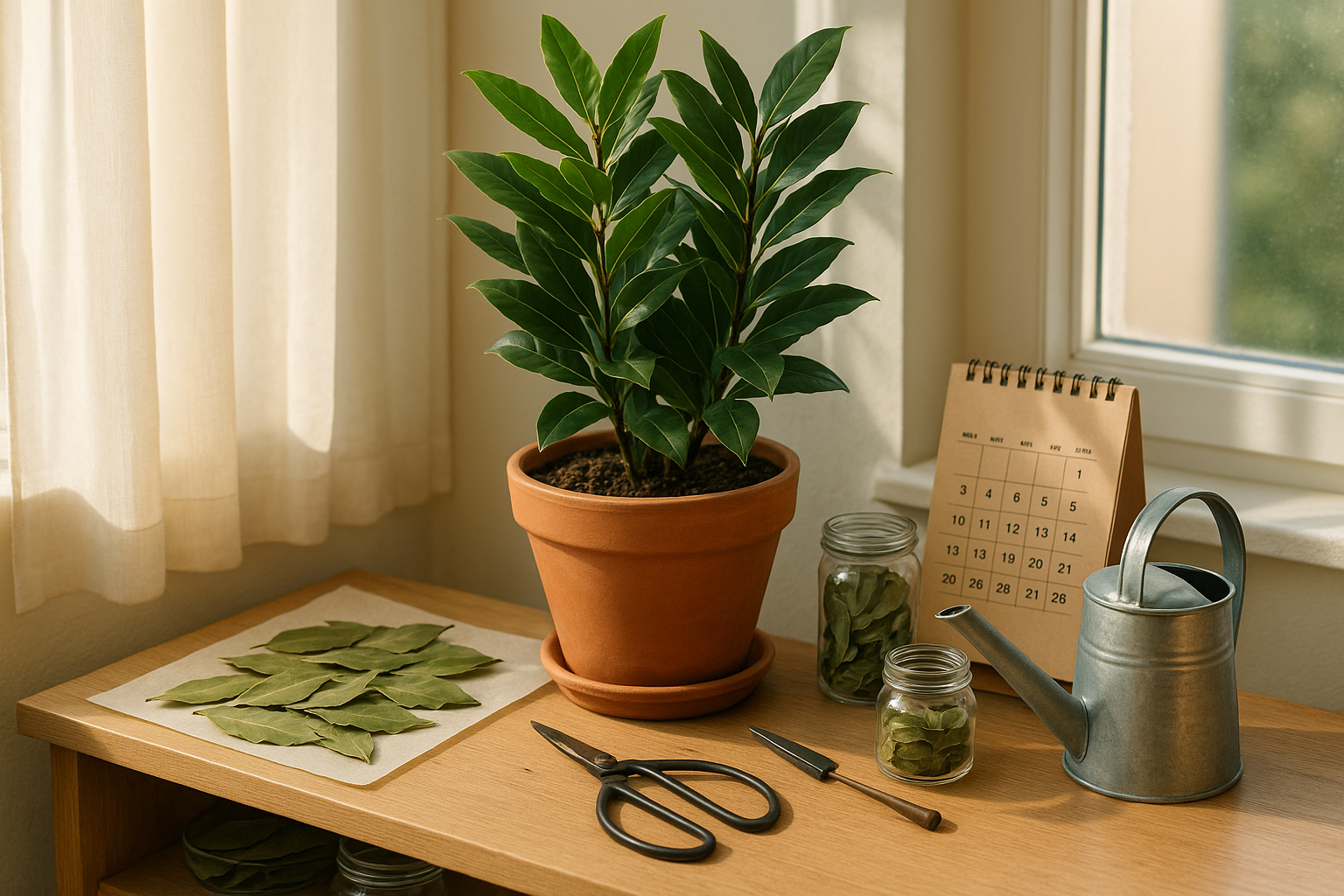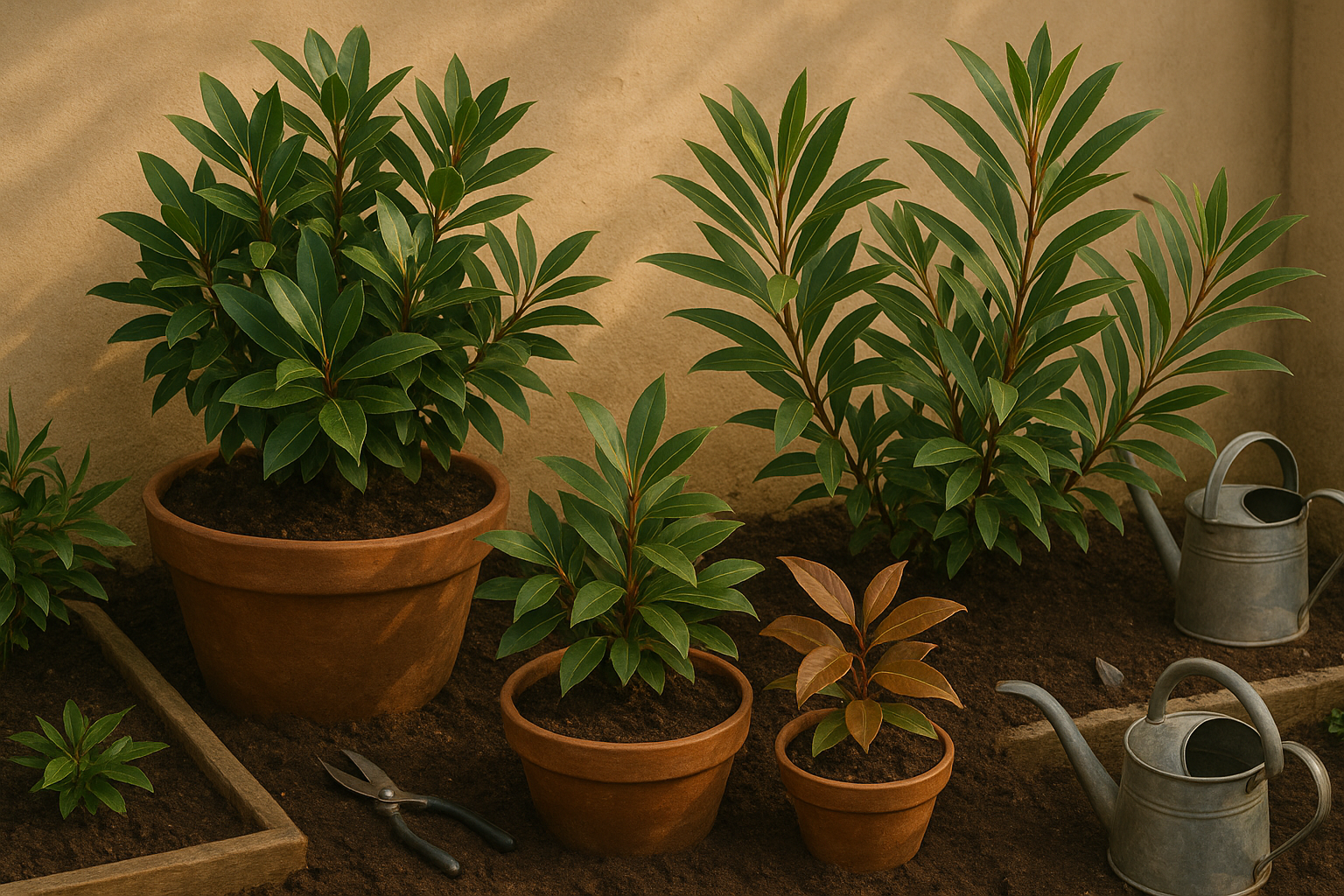Best Bay Leaf Varieties to Grow

Growing your own bay leaf plant can add a fragrant, evergreen touch to your garden while providing fresh leaves for cooking. Many home gardeners love bay because it’s hardy, easy to prune, and thrives both in pots and in the ground. The most common variety is the classic Mediterranean Bay (Laurus nobilis), known for its glossy leaves and traditional, subtle aroma that’s a staple in soups and stews. However, there are several varieties worth exploring, each with distinct characteristics to suit different climates, garden styles, and flavor preferences, making bay well-suited for both beginner and seasoned gardeners alike.
Popular Bay Varieties
The Mediterranean Bay (Laurus nobilis) is the gold standard, often just called “bay laurel.” It’s a slow-growing shrub or small tree boasting rich, green foliage and an unmistakable savory scent. Sweet Bay is another term you might encounter for the true Laurus nobilis, so don’t let the names throw you off—they’re the same plant.
California Bay (Umbellularia californica) is a native alternative with longer, narrower leaves and a strong, almost eucalyptus-like aroma.
For something a bit different, Indian Bay Leaf (Cinnamomum tejpata) is often used in South Asian cuisine and offers a warmer, cinnamon-like flavor, though it’s less common in home gardens due to climate needs. Although they all perform best in sunny, sheltered spots, each type brings its unique twist to your kitchen.
Comparing the Varieties
- Mediterranean Bay: The most versatile and cold-tolerant, it can handle occasional frost if mulched.
- California Bay: More robust with a strong flavor that can easily overpower dishes—use sparingly.
- Indian Bay: Not a true bay laurel but part of the cinnamon family; best suited to warm, humid zones and struggles in cooler climates.
When choosing among them, consider your local climate and cooking style. Mediterranean Bay works perfectly for most temperate backyards and European dishes, while California Bay suits the U.S. West Coast or anyone seeking a bolder flavor. If you’re limited to container gardening, Laurus nobilis responds well to occasional root pruning and shaping.
Lesser-Known Bay Varieties
A few lesser-known varieties might catch your interest if you’re after something unique:
- Indonesian Bay Leaf (Syzygium polyanthum)—called daun salam, essential for Southeast Asian dishes with a mild flavor and subtle clove notes; prefers tropical warmth.
- West Indian Bay (Pimenta racemosa)—known for aromatic leaves used in bay rum; thrives in consistently warm temperatures with well-draining soil.
While these are harder to find and grow in cooler climates, specialty nurseries and online suppliers sometimes carry seeds or young plants. Experimenting with these can be a fun way to expand your culinary repertoire and spice up your herb garden.
Growing and Caring Tips
To grow healthy, thriving bay plants, start with well-drained soil in a sunny, sheltered spot—south-facing patios or bright windowsills are ideal for pots. Keep soil evenly moist during establishment but avoid waterlogging by using pots with drainage holes. Regular pruning helps keep the plant manageable and encourages bushier growth.
If you live in colder regions, bring container-grown bay indoors for winter or protect outdoor plants with fleece. Although pests are rare, watch for scale insects, and refresh the soil yearly for best results. Most importantly, harvest leaves as needed and let your plant mature—a little patience leads to richer, more flavorful bay leaves for your cooking.
Introduction to Bay Leaves and Their Uses
Choosing the best bay leaf varieties can make a huge difference in both your kitchen and garden. Bay leaves are renowned for their aromatic fragrance and subtle herbal flavor, making them a staple in countless dishes—from soups to stews and curries. But beyond cooking, bay laurel plants are valued by gardeners for their glossy green foliage and year-round appeal. If you’ve ever tasted a dish enriched with freshly harvested bay leaves, you know how much depth and nuance the right variety can add.
Not all bay leaves are created equal, though. Picking the best bay leaf varieties for your home garden means considering how they’ll thrive in your climate, how robustly they grow, and which offer the tastiest flavor for your recipes. For example, while Laurus nobilis is a classic choice that flourishes in many temperate zones, some gardeners prefer alternatives like California bay for a bolder taste or Indian bay for specialized regional cooking.
In this post, we’ll focus on the most popular and practical bay leaf varieties that home gardeners can grow successfully. Whether you want an easy-to-care-for container plant or are planning a fragrant hedge, you’ll find tips and suggestions to help you pick the right bay for your needs.
The “True Bay”
Laurus nobilis, often called Sweet Bay or simply “true bay,” is a handsome evergreen shrub or small tree with glossy, dark-green, aromatic leaves that instantly evoke Mediterranean breezes. Reaching up to 20 feet when planted in the ground but staying much smaller in pots, it can be pruned into attractive topiaries or hedges, adding structure and elegance to gardens year-round.
Sweet Bay is renowned for its rich, herbal flavor that’s both subtly floral and slightly peppery, making it a beloved staple in soups, stews, sauces, and classic bouquet garni blends. Just one or two leaves simmered slowly will impart a deep, savory warmth without overpowering other ingredients.
Gardeners appreciate its adaptability; Laurus nobilis thrives best in USDA zones 8-10, preferring well-drained soil and a sunny or lightly shaded spot. If you experience colder winters, no worries—Sweet Bay flourishes in containers that can be moved indoors during frost, as long as it gets plenty of light and isn’t overwatered.
Watch out for common pests like scale insects or aphids, which can often be managed by rinsing the leaves or using insecticidal soap. Leaf spot, another concern, is best prevented by ensuring good air circulation and watering at the soil level instead of on the foliage.
With a little care, Laurus nobilis rewards both cooks and gardeners alike with year-round beauty and dependable culinary value, truly living up to its reputation as the “true bay.”
Turkish vs. California Bay Leaves
Turkish bay leaves (Laurus nobilis) and California bay leaves (Umbellularia californica) might look similar in your spice jar, but they’re quite different in flavor, aroma, and how they’re grown.
Turkish bay leaves, a classic staple in Mediterranean and European dishes, offer a subtle, slightly sweet flavor with gentle floral and herbal notes. They’re perfect for soups, stews, and tomato sauces where you want background complexity that doesn’t overpower other ingredients.
California bay leaves, on the other hand, are much stronger and sharper, with bold menthol and eucalyptus undertones that can easily dominate a dish if you’re not careful. They’re often favored in hearty braises, wild game recipes, or West Coast-inspired dishes.
Growing Conditions
Turkish bay laurel prefers mild climates (USDA zones 8–10), partial shade, and well-draining soil. They grow slowly as evergreen shrubs or trees and can tolerate occasional drought once established.
California bay grows natively along the West Coast (zones 7–10), thriving in drier soils, full sun, and a wider range of temperatures.
Which One Should You Choose?
For home gardeners, Turkish bay is better suited for culinary use if you love subtlety and classic global recipes. It’s also easier to manage as a contained shrub in small gardens or pots.
California bay, though more pungent, can be a fun choice for adventurous cooks or those in drier climates who want a hardier, native plant.
Choose according to your growing conditions, taste preferences, and culinary goals—just remember to adjust recipes to taste if you swap one for the other!
Other Notable Bay Leaf Varieties and Close Relatives
Beyond the familiar Mediterranean bay leaf (Laurus nobilis), several other intriguing bay species are used around the world. The Indian bay leaf, or tej patta (Cinnamomum tamala), features a subtly different aroma—warmer and more reminiscent of cinnamon. This makes it a staple in Indian curries and biryanis, though it should not be confused with true bay leaf used in classic Mediterranean dishes.
The Indonesian bay leaf (Syzygium polyanthum), known locally as daun salam, adds a mild, earthy flavor to Southeast Asian stews and rice dishes. However, its delicate taste doesn’t substitute well in recipes calling for Laurus nobilis.
Meanwhile, the West Indian bay leaf (Pimenta racemosa) isn’t used for cooking but is famous for producing bay rum, a traditional Caribbean cologne and liniment; its leaves are considered mildly toxic if ingested.
If you’re thinking of cultivating any of these, keep in mind:
- Indian and Indonesian bay thrive in subtropical to tropical climates.
- Laurus nobilis tolerates a wide range of conditions.
- Some states restrict the import of certain bay relatives due to pest and disease concerns.
Always verify you have the right species for your intended use, as some ornamental “bay” plants, like the cherry laurel (Prunus laurocerasus), are actually toxic and should never be consumed.
Tips for Growing and Using Bay Leaf Varieties at Home

Bay leaf plants thrive best when started from healthy nursery plants, as seeds can be slow to sprout and require patience. Choose a sunny spot with well-draining soil if planting outdoors, or opt for sturdy 12-inch containers if you have limited space or live in colder climates.
Bay laurels grow slowly and appreciate regular pruning to maintain a bushy shape—snip back new shoots in spring and summer to promote branching, and don’t be afraid to shape your plant for aesthetics.
If winters drop below 32°F, bring container-grown bay plants indoors or place them in a protected area like a frost-free porch. They’ll tolerate lower light temporarily but stay happiest near a bright window.
Harvesting and Storing Bay Leaves
Harvest bay leaves by snipping mature, dark green leaves individually throughout the year, as these pack the most flavor. Dry them flat in a single layer away from direct sunlight, then store in airtight jars for up to a year. Home-dried leaves retain their aromatic punch much better than store-bought ones.
Ways to Use Bay Leaves
- Use fresh or dried bay leaves in soups, stews, tomato sauces, or homemade broths—always remember to remove them before serving.
- Beyond the kitchen, bay leaves make fragrant additions to homemade wreaths, potpourri, or natural closet fresheners.
- Their subtle herbal scent helps repel pantry pests, making them a clever addition to storage containers or rice bins.
With a little care, your bay plant can provide both culinary inspiration and natural freshness around your home for years to come.
